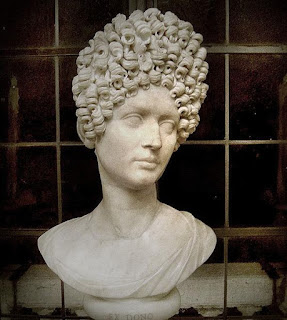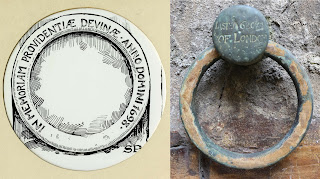Grazie alla School of Museum Studies dell’Università di
Leicester, ho avuto la fortuna di passare l’estate a Bath, lavorando con il
Collections Management team del Museo delle Terme Romane. Un’esperienza unica,
che mi sta permettendo non soltanto di crescere professionalmente in uno tra i
più rinomati musei del Regno Unito, ma anche di scoprire, giorno dopo giorno,
l’affiscinante storia di questo sito, direttamente attraverso le sue collezioni.
Uno dei momenti più interessanti è stato progettare il
cosiddetto Tuesday Timetable,
un’attività il cui scopo è di mostrare oggetti, appartenenti alla collezione
museale, generalmente non accessibili al pubblico. L’idea è di sviluppare un
tema e presentarlo ai visitatori in un tavolo, posto nella scenografica cornice
dei Great Baths.
Il titolo del mio Tuesday
Timetable è stato “Il potere espresso attraverso la moda”. Durante i miei
studi in archeologia classica, mi sono appassionata di iconografia antica, cioè
lo studio e l’interpretazione delle immagini e i loro attributi.
In antichità, monete e statue svolgevano la stessa
funzione degli attuali mezzi di comunicazione di massa, diffondendo immagini e
i loro significati simbolici ad ampio raggio. Grazie alla loro presenza
costante nella vita di tutti i giorni - le monete erano il principale mezzo di
scambio, così come le statue decoravano i principali luoghi pubblici delle
città - le immagini rappresentate erano
facilmente riconoscibili anche dalla gente comune.
Nell’antica Grecia, i principali soggetti sulle monete
ritraevano dei ed eroi, mentre i Romani col tempo li sostituirono con effigi
degli imperatori e membri della loro famiglia. In tal senso, monete e statue
erano i principali veicoli di propaganda politica del tempo.
L’influenza sociale e politica per i Romani si esprimeva
attraverso la moda. Gli imperatori portavano corone radiate e d’alloro, erano
raffigurati col volto rasato, o con una folta barba, mentre le loro mogli sfoggiavano
acconciature destinate a fare tendenza, sia semplici che estremamente
elaborate.
 |
| Busto femminile con acconciatura tipica del periodo Flavio (fine del I sec. d.C.). Roma, ©Musei Capitoliniusto |
 |
| Busto dell’imperatore Adriano (76-138 d.C.), che reintrodusse la moda della barba. Roma,, ©Musei Capitolini Nazionale Romano, Palazzo Massimo alle Terme |
.
Una lavagna mostrava ai visitatori immagini di scultura
antica e i cambiamenti nello stile; sul tavolo, invece, era possibile ammirare
e toccare monete di epoca greca e romana, e le repliche delle teste della
famosa Sulis Minerva, e di Agrippina Maggiore, madre dell’imperatore Caligola,
i cui originali sono esposti nel museo. Ma non è tutto! Nella ricca collezione
museale, ho trovato alcune medaglie inglesi della metà del XVIII secolo, in cui
i profili dei reali si ispiravano chiaramente a modelli Greco-romani, a
conferma del profondo radicamento della cultura classica nella cultura
occidentale.
 |
| Il mio Tuesday Timetable ai Great Bath |
Il pubblico ha molto apprezzato poter vedere e toccare i
reperti, commentando e comparando i cambiamenti di stile, gusti e moda passati,
rispetto ai giorni nostri. Anche i più piccoli non si sono annoiati, impegnati
a disegnare le loro monete personali!
 |
| Io e la mia compagna di corso Yahao… Da Leicester a Bath! |














